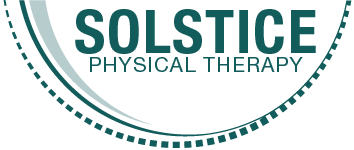What is Myofascial Release? How about cupping?
 Cupping and Myofascial Release FAQ
Cupping and Myofascial Release FAQ
By Dr. Lisa Wilcox
What is cupping?
Cupping utilizes plastic or glass cups and adds a form of suction to draw the tissues up into the cup. This creates a negative pressure rather than the compression that is normally used within different massage and soft tissue mobilization techniques. This negative pressure breaks apart tissue adhesions and improves both blood and lymph circulation in the skin and muscles. This increases pliability, mobility and decreases “stagnation” within the fluids and tissues. Cupping can be very relaxing and is a less painful and more effective way of breaking up tissue adhesions and knots than the often-painful deep tissue massage. In my experience, clients report feeling very relaxed and at the next visit they often report that cupping was much more effective for relief of pain and stiffness than other forms of massage and soft tissue work.
How is cupping used during a treatment?
Cupping is just one tool that I use during my physical therapy and bodywork treatments. Cupping is so effective at improving circulation and breaking up muscle knots and adhesions and I use it throughout my treatment depending on the individual needs and responses to the bodywork. Along with cupping, I focus on the deeper and more stubborn areas by utilizing dry needling, myofascial release, stretching and other forms of soft tissue mobilization. I always give my patients education and exercises to maintain this mobility on their own.
What are those bruises that can happen after cupping?
Those round “bruises” that many people became familiar with when watching Michael Phelps in the Olympics are not actually bruises at all. With cupping, they can occur in areas where there is a build-up of toxins and stagnant fluids between the tissue layers and they fade after a few days to 1 week depending on the severity of the discoloration and the individual’s circulation. After a few treatments, there is usually minimal discoloration as fluid and tissue mobility has returned to the area.
What is myofascial release?
Myofascial release is a gentle technique that utilizes sustained pressure and movement that gets down to the “fascial” level to eliminate restrictions and improve overall mobility, blood flow and general well-being. The “fascia” is a tough connective tissue that is connected throughout the entire body. It surrounds each part of the muscles, nerves, bones, organs, skin – literally every part of our body, and allows things to maintain shape and stay in correct position. Trauma, poor posture, repetitive motion and inflammation can put stress on the fascia and cause it to form restrictions that eventually cause pain and dysfunction throughout the body. Since the fascia is literally connected throughout the body, restrictions in one area can cause pain in a completely different area of the body (example: restrictions around the spinal cord and vertebrae causing pain in the foot or head). The release of these tough connective tissue restrictions requires a prolonged hold of a few minutes or more (depending on the extent of the restriction). Some people feel extremely relaxed, some may feel a light pulling or cramping sensation and most people feel improved mobility, posture and a sense of lightness afterwards.
What can be treated with myofascial release?
EVERYTHING!! In my practice, I have found that myofascial release is an extremely effective tool for every condition that I have treated: headaches, migraines, scar tissue and adhesions, low back pain, neck pain, spinal disc disorders, numbness and tingling, neuropathies, fibromyalgia, chronic pain and much more. I also utilize this technique in conjunction with cupping and dry needling to improve flexibility and general mobility for enhanced athletic performance, improved posture and injury prevention.
Are there any reasons someone should avoid cupping or myofascial release?
Please alert any healthcare professional if you are currently utilizing blood thinning medication, even as mild as low-dose aspirin, as this can affect how and if they will utilize techniques such as cupping, myofascial release and dry needling.
For more information or to see if you could benefit from these treatments, contact Solstice Physical Therapy
(720) 369-7738
info@SolsticeHealthcareResources.com
www.SolsticePhysicalTherapy.com
